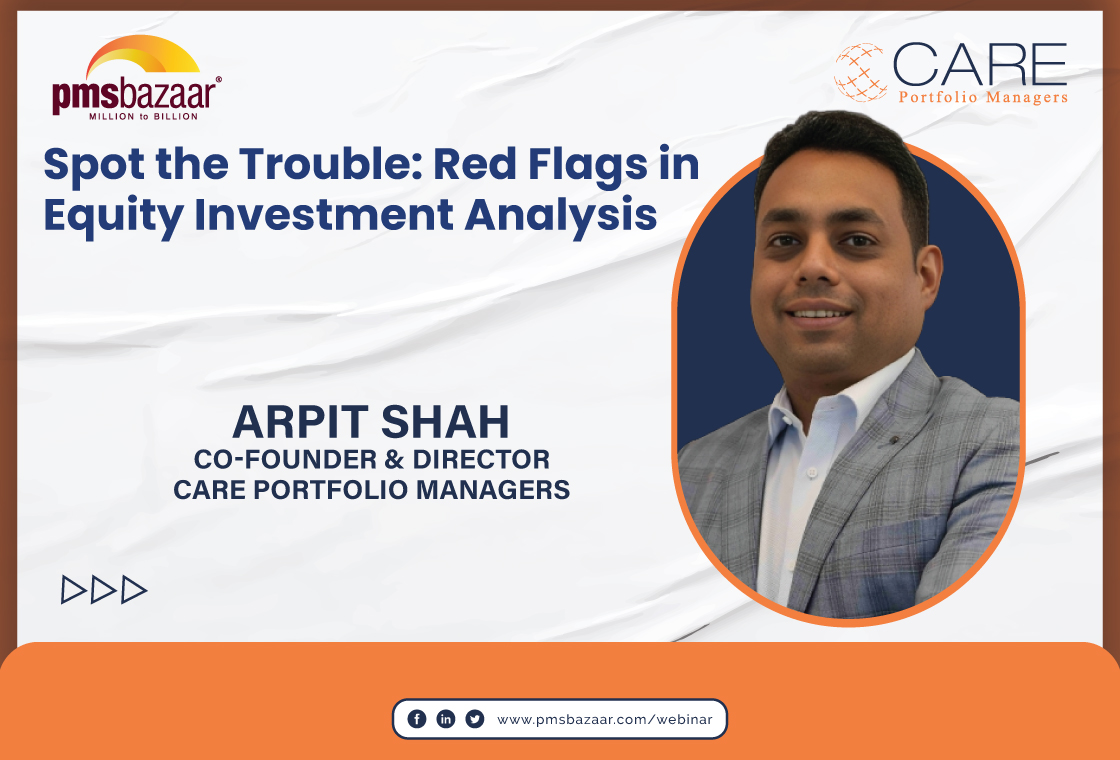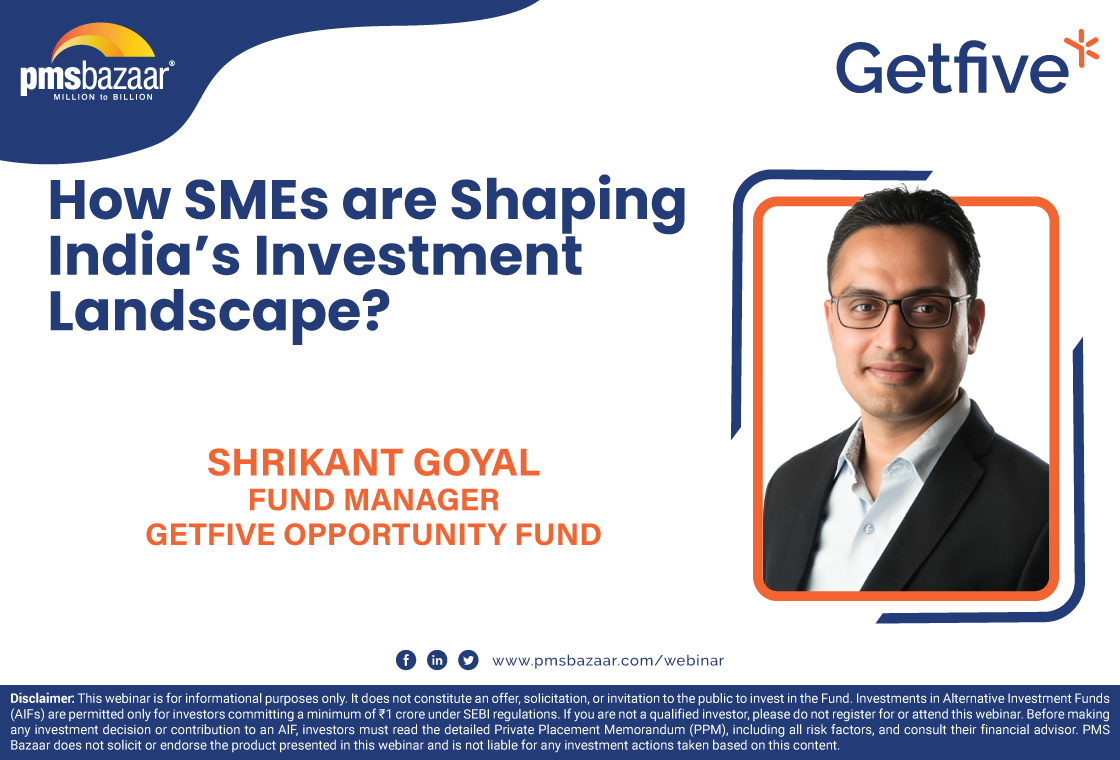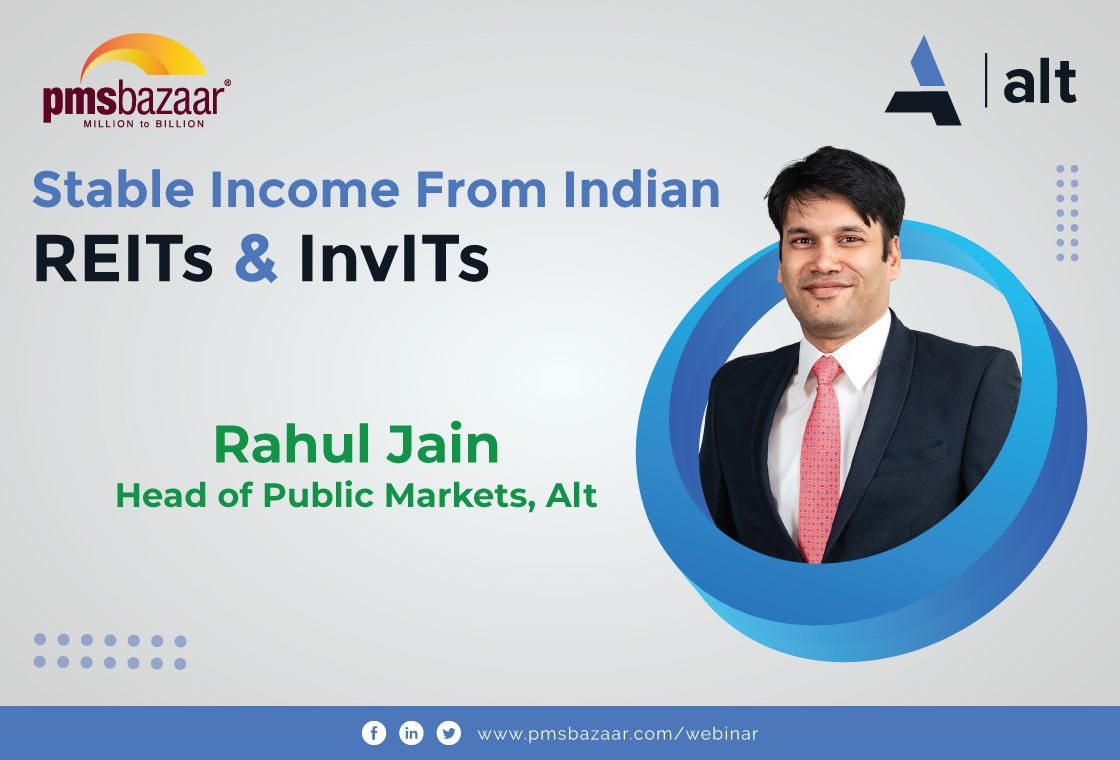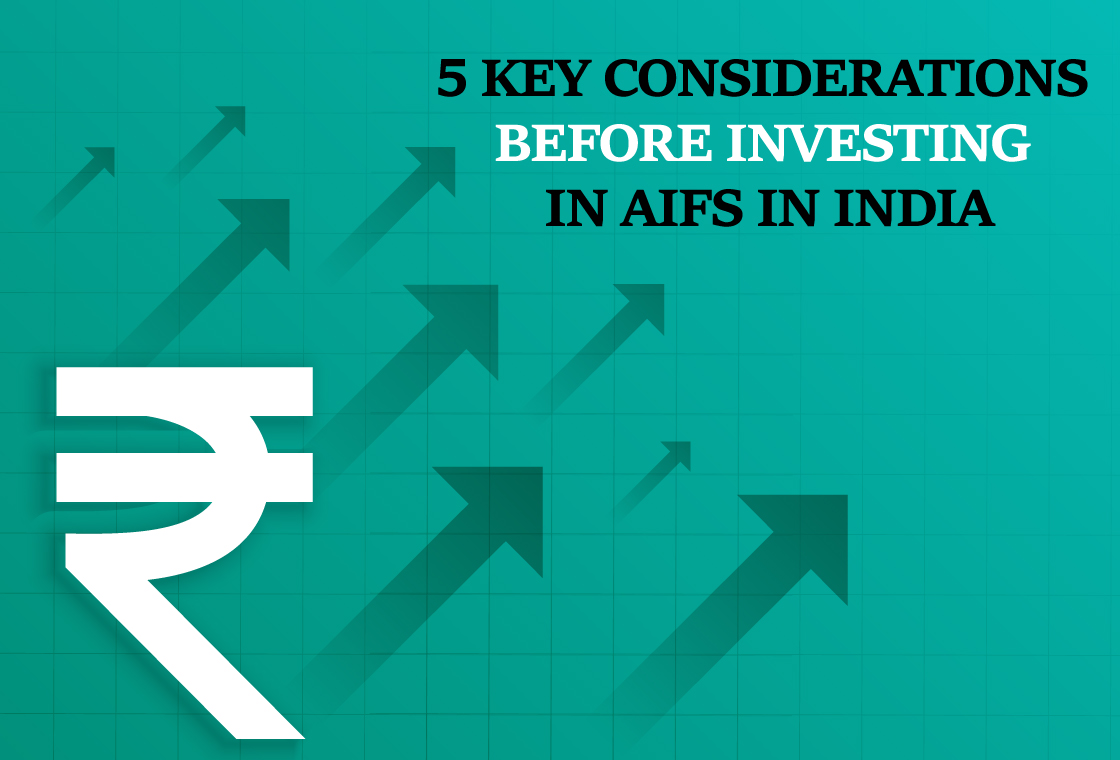There is always a lively debate between believers of growth investing and value. Should earnings growth justify any price? Or P/E be the value seeker's ultimate tool across cycles? For many, such discussions can influence their next investment. But, Amit Jeswani, Founder and CIO, Stallion Asset Management has picked his side long back: gunning for growth. In a special webinar organised by PMS Bazaar on 'Wealth Creation For The Next Decades With Growth Investing', the expert shares very important lessons for growth investors, how his PMS co Stallion approaches investments, practical insights into how some of the biggest growth businesses work and much more. Hailing from a family of stock brokers, Amit has carved a niche for himself by growing Stallion first as a research firm and then as a credible PMS player.

But why listen to him?
Stallion started as a research firm, competing with about 3000 odd research firms in the country. But, Stallion is among the handful that went from being a research desk to being a PMS with its Stallion Asset Core Fund. "....and only one reason this happened is because we created value for our customers consistently. We didn't come here by a parachute," says Amit.
Stallion PMS' performance, in its short stint since 2018 inception, is a good reason why investors should track the company and listen to Amit. In the first full year, Stallion PMS strategy was up broadly 27 per cent net of fees against 5-6 per cent for the benchmark. In the second year, Stallion PMS portfolio was up 41% net of fees, again making it one of the better performing PMS in the country.
But did Stallion PMS take a lot of risk to deliver these kinds of returns? "No. Our portfolio beta which is the measure of risk is 0.82 which is 18 per cent lower than the benchmark. Standard deviation is also lower compared to the benchmark. So we did generate returns with lower risk. Even in the drawdowns in the first quarter of 2020, the markets were down about 30-32 per cent but the Stallion portfolio was down 18 and a half percent net of fees," reveals Amit.
Market mantras
Being growth investors is one thing, having a well laid out investment philosophy quite another. Stallion PMS believes in 6 key mantras. These are important because the PMS firm aims to deliver 18-25 per cent CAGR growth for the next 10 years. To put it simply, Rs 1 crore can become Rs 9.3 crore if the wealth compounds at 25 per cent.
Firstly, Buy and Rotate Strategy beats Buy and Hold strategy.
Secondly, Every bull market has a different leader and the job is to find the leader in every bull market and stick to it.
Thirdly, there is no bull market without earnings growth. Stallion aims to buy sectors with high expected sustainable growth of more than 20% for next 3-5 years.
Fourthly, the previous bull market will not lead the next bull market.
Fifth, prefer buying companies that are making 52 week Highs, rather than new 52 week lows.
Lastly, the more the market believes in the longevity of growth, the more valuations the stock gets. Longevity is often the mispriced portion in capital markets.
What works in markets
Stock performance is dependent on EPS (earnings per share) growth and capital efficiency, says Amit. He added that opportunity size, competitive advantage, quality of management, and capital allocation decides the growth in EPS and hence stock price returns.
"In order to get 18-25 per cent CAGR in the stock market, it is very important we invest in companies that grow at the same rate in the next decade. Markets reward secular, predictable, durable and scalable growth in business. If India's GDP moves from $3 trillion to between $5-7 trillion depending if we grow at 5 or 9 per cent," says Amit.
For a business to grow revenues, there are 4 ways. 1) Increase volume, 2) Increase price, 3) Launch new products and 4) Acquire other companies.
"We believe the largest market cap creation will happen in these 4 sectors: 1) Consumer 2) Financials 3) Technology and 4) Pharma. Why these 4 sectors? The opportunity size is massive. The business model in these 4 sectors are secular and typically get better with size. Majority of our portfolio is B2C facing businesses. We avoid B2G (Business to Government), G2B (Government to Business) though we are open to B2B business only if its hyperscalar with massive competitive advantage," Amit says.
Valuation matters
Profit depends on entry and exit price of investments. But, valuation determines whether the price is right.
Speaking on popular metrics like P/E and P/B, Amit opined that these metrics work when growth rate is less than cost of capital (mature business).
Perhaps taking a potshot at value investing enthusiasts, Amit said deep value investing works in textbooks, twitter and whatsapp only.
Shedding light on smallcap growth investing, Stallion PMS Founder talked about the pitfalls. This is not a popular subject. "India was a trillion dollar economy in 2008. Today we are a 3 trillion dollar economy. How many smallcaps do you know that have made it large in the last 10 years? Very few small caps become mid caps," Amit says.
Delving deep into small caps, Amit talked about how market leadership, technological edge, and change in business model is needed for small caps to become midcaps. Remember it needs to confiscate the market share while scaling up fast. "The only time we invest in small caps is when the sector is in trend. Sell them before the trend ends. Chemicals is a trend today. NBFC was a trend in 2013-17," Amit narrates.
Amit also talked about the portfolio risk approach before taking questions from the webinar audience.
For more information, please contact info@pmsbazaar.com
Recent Blogs
.jpg)
Passively Active Investing — A Modern Investor’s Lens on ETF-Based PMS
PMS Bazaar recently organized a webinar titled “Passively Active Investing — A Modern Investor’s Lens on ETF-Based PMS,” which featured Mr. Karan Bhatia, Co-Founder and Co-Fund Manager , Pricebridge Honeycomb ETF PMs. This blog covers the important points shared in this insightful webinar.

Spot the Trouble: Red Flags in Equity Investment Analysis
PMS Bazaar recently organized a webinar titled “Spot the Trouble: Red Flags in Equity Investment Analysis,” which featured Mr. Arpit Shah, Co-Founder & Director, Care Portfolio Managers. This blog covers the important points shared in this insightful webinar.

Long-Only AIFs Rebound Sharply in October; Long-Short Strategies Lag Despite Lower Volatility
106 long-only AIFs averaged 3.68% vs 32 long-short AIFs at 2.7%; only 24–31% of funds beat key indices

Markets log strongest monthly gains in 7 months; PMS performance turns near-uniform in October
Nifty 50 TRI gained 4.62%, BSE 500 TRI rose 4.27%; 415 of 427 equity PMSes ended positive

How SMEs are Shaping India’s Investment Landscape?
PMS Bazaar recently organized a webinar titled “How SMEs are Shaping India’s Investment Landscape?” which featured Mr. Shrikant Goyal, Fund Manager, GetFive Opportunity Fund.

Stable Income from Indian REITs and InvITs
PMS Bazaar recently organized a webinar titled “Stable Income from Indian REITs and InvITs,” which featured Mr. Rahul Jain, Head of Public Markets, Alt.

5 Key Considerations Before Investing in AIFs in India
Alternative Investment Funds (AIFs) have emerged as a compelling option for sophisticated investors seeking diversification and potentially superior returns. But venturing into AIFs requires a clear understanding of their unique characteristics that go beyond simply knowing what they are and their categories.

How AIF can help in diversification?
Traditionally, Indian investors have relied on a mix of stocks and bonds to build their wealth. While this approach offers diversification, it can still leave your portfolio vulnerable to market fluctuations. Enter Alternative Investment Funds (AIFs), a dynamic asset class gaining traction for its ability to unlock diversification beyond the realm of conventional options.

